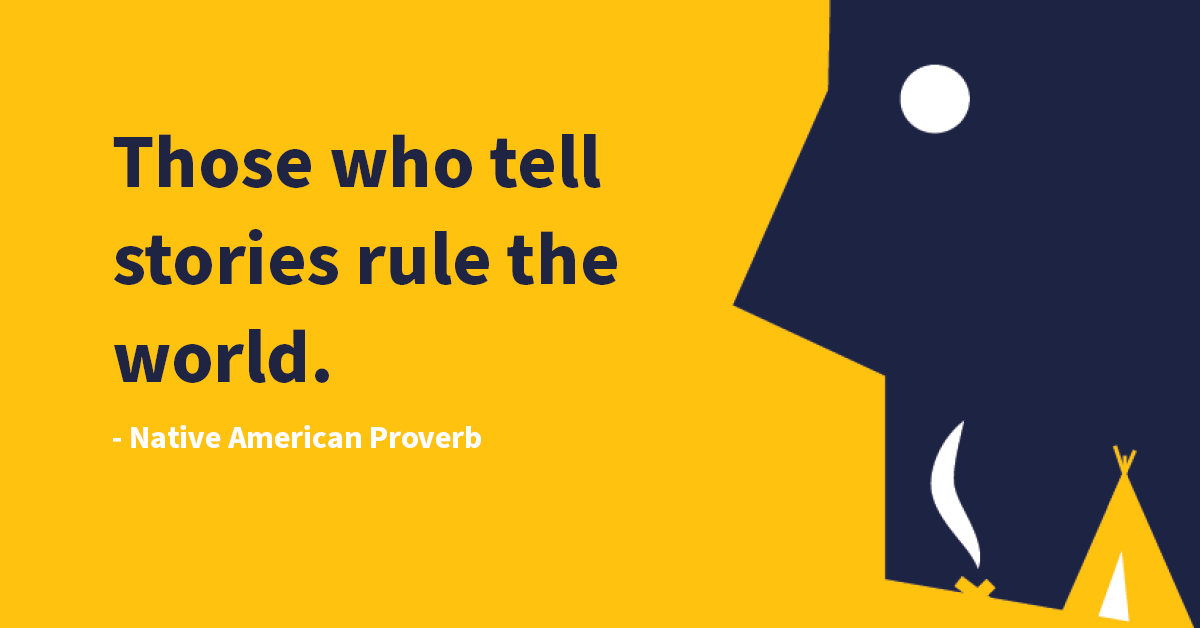
The work of a modern leader is diverse, but one thread runs through each of their many activities: influencing. A leader is faced with countless different stakeholders each needing to be brought a long a journey, coaxed forward, and engaged in the good fight. Transformative approaches to leadership necessitate a buy-in by the whole.
Yet how much time do we spend thinking about our approach to influencing others? Often this is something believed to be a product of personal style, related to charisma or charm. However, like all aspects of leadership, there are skills that we can acquire to become more effective. And, as the evidence increasingly shows, the number one skill for engaging and persuading others is that of storytelling.
But, we might wonder, why do leaders need storytelling skills when we have Big Data? Our digitally connected world means we have a wealth of insight into customers, organisations and the market at our fingertips. The truth is, when it comes to translating data into human action and transformative change, raw figures are not enough. The language of reason and facts may be precise, but it is not the language of inspiration. We need storytelling.
Storytelling To Engage
Cognitive psychologists have found that stories speak to a deep primal aspect of our minds. In fact, we have a tendency to understand our entire sense of self as a narrative. There is a protagonist and antagonists, conflicts and resolutions, lulls and climaxes. We use stories intimately to develop a sense of identity and ‘life story’.
So, what does this mean for leadership in modern organisational contexts? It means that our listeners are hardwired to understand stories better than facts and figures. Stories help us to remember bulky sets of information. Presented discretely and in large quantities, information is often lost but when contextualised within a greater whole, we have much better retention.
We live in the time of Big Data. There is more information available about the world, trends and business than we know what to do with. Data storytelling is the most sought-after skill of this decade. Storytelling helps make sense of all this complex information and communicate it to others.
Stories also help make complex or esoteric concepts more concrete. Our understandings of love, bravery, virtue and passion are all developed through our interaction with stories passed down through culture. Similarly, when communicating broader concepts about an organisation’s transformative vision and purpose, stories make these ideas real and relatable.
Storytelling To Persuade
Not only is storytelling immediately comprehensible to the human brain, it also engages our emotions – the most potent motivators of behaviour. Human beings are profoundly empathetic organisms and by nature will insert themselves into the experience of others.
When telling a story, we facilitate this process by presenting a realistic and engaging situation for the listener to relate to. Whether we are energising change within a business or reinforcing important values of organisational culture, the use of stories is integral to making it ‘stick’. By the listener becoming emotionally invested in the idea, they are significantly more likely to follow-through with the message.
Increasingly, storytelling as a vehicle for social change has become a central focus in social justice initiatives. Stories allow us to overcome differences, challenge and redefine our values and experience an encounter with each other. As we try to work through the, at times, conflictual aspects of organisational transformation, using stories can be a key tool for creating unity.
Approaches to Storytelling
When thinking about communicating through storytelling, there are a number of key principles to keep in mind:
Think structure
Listeners expect a certain rhythm to stories, which typically takes the form of a beginning, a middle and an end. A beginning should set the scene and introduce key information, the middle develops a conflict, obstacle or tension, and the end provide a resolution. Think about your favourite movie or book and how these key elements are incorporated.
Engage the imagination
Great storytellers harness the vibrancy of the human imagination and, in turn, excite their listeners’ emotions. Create a story that speaks to the human condition, common emotions and frustrations and involves the senses. For example, try describing the feeling of the sun on your skin or the bodily sensation of joy.
Purpose, purpose, purpose
Ultimately, you are telling a story for a reason and you want to make sure the listener comes away understanding that reason. Make sure the message is conveyed in the events of the story. One way to do this is through a learning journey where the central character comes to a realisation or learning because of the challenges faced in the story.
So next time you are communicating with your colleague, stakeholder, team or even organisation, think about how much further a story will take you than a graph.
Because in the end, we are all just one part of a greater story.
Need More Help?
Keen to find out more about the transformative power of storytelling? Performance Frontiers help guide organisations and their people to win the hearts and minds of those around them by communicating data and ideas, with empathy, in a clear, effective, and compelling way. Speak to us today about how we can partner with you to leverage the magic of story to explain, engage, and influence.







